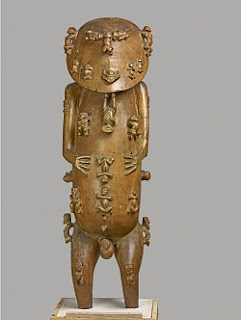Canadian classicist Dimitri Nakassis ('
Against the universal museum'
Aegean prehistory
May 10, 2016) eloquently addresses the arguments for the universal
museum as represented by James Cuno and Tiffany Jenkins that the
'Universal Museum' saves antiquities from nationalism by putting them
into a global context. This is aped by collectors to support their own
acquisitive activities. Nakassis finds the whole structure of the
argument flawed:
My suspicion with this argument is simply that while it is happy to
criticize others, it does not engage in a self-critique. That is to say,
the politics of the universal museum are not something that is
interesting to those who make these arguments. Indeed, the politics and
the history are actively white-washed. [...] Indeed, it seems odd to argue that universal museums like the British
Museum are somehow immune from the charge of nationalism. [...] It’s not like the British government is immune from
the nationalistic desire to keep cherished artifacts from leaving the
country – as this government ban from the sale of the dagger and robes of T.E. Lawrence abroad shows. Or see this. Or this. Or this. Or this. Or this. Or this. Where is the criticism of the petty nationalism that seeks to deny Kelly Clarkson ownership of a ring owned by Jane Austen?
The UK’s Culture minister Ed Vaizey said of the export ban that it
“provides us with a ‘last chance’ to save treasures like these for the nation so they can be enjoyed by all of us.” (Emphasis mine). It’s worth noting that British nationalism, or American nationalism,
is never flagged as a problem by those discussing repatriation and the
proper home for material culture. Instead, the nationalism problem is
always framed as Us against Them.
This comes out most
clearly in the writings of US private collectors that clearly see
themselves as a elite placed by Divine Favour over the "natives" of the
states from which they wish to wrest collectable trophies. Nakassis points out how the narratives used as case studies often oppose
allegedly homogeneous national groups "The Greeks. The Turks. The
Egyptians. The Nigerians" with the other protagonists in this drama who:
have names, identities, carefully thought out opinions. Thus the
discussion is structured to oppose the museum curators with academic
credentials and carefully thought-out opinions to anonymous groups who
apparently all think alike along narrow nationalistic lines. Finally, we
are told that these parochial, nationalistic museums that
want their treasures back reproduce an ethos that “resurrects racial
ways of thinking” (Jenkins). Indeed, we are told that “far from tearing
down walls between people, these institutions erect new ones.” This is
the ultimate twist of the knife: the victims of imperialism and
colonialism are now accused of “racial ways of thinking” whereas the
poor, downtrodden curators of the noble universal museum (the real victims in all of this!) don’t see race [...].
Instead, these brave men and women only see the grand sweep of the
history of humankind. Yet neither do they see, for they choose not to
see, their own past or for that matter their own present.








